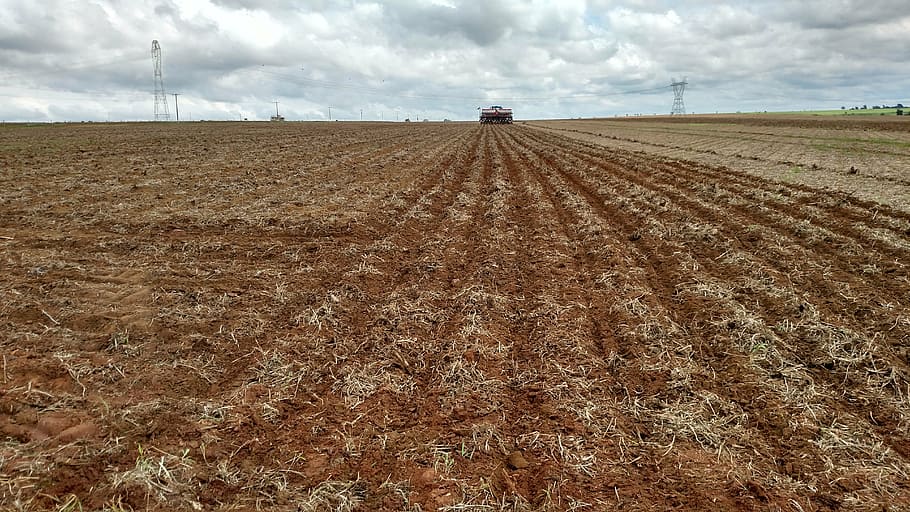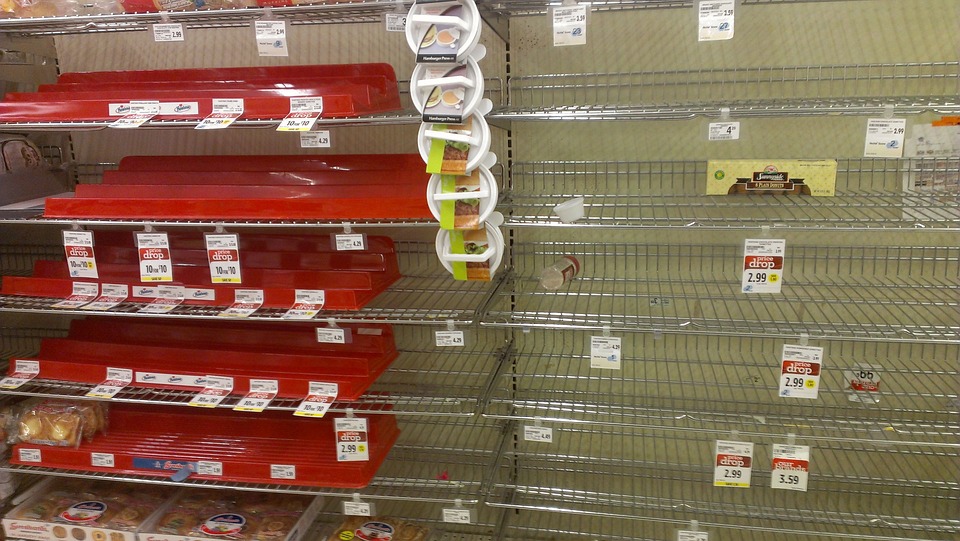Weekly News Roundup 27/08/23
- News
- August 27, 2023

Food supply crisis is a major concern in the UK and refers to a situation where there is a significant shortage of food, leading to widespread hunger and malnutrition. Such a crisis may occur due to a variety of factors, including natural disasters, climate change, pest infestations, crop failure, political unrest, and economic instability.
Food supply chain issues have become more prevalent in recent years, highlighting the vulnerability of the UK’s food system. Disruptions in the transportation of goods, processing facilities, and labour shortages can cause a food supply chain shortage. The COVID-19 pandemic has brought this issue to the forefront, with lockdowns, border closures, and reduced trade causing widespread food shortages.
One of the key causes of food shortage on purpose is panic-buying or hoarding, where individuals or groups stockpile food, causing a shortage for others. This behavior is often driven by fear or panic and can cause significant harm to the wider community. The UK government has a role to play in regulating the supply chain to prevent hoarding and ensure an equitable distribution of food resources.
To prevent food supply chain collapse in the UK, the government must take proactive measures to address issues related to food security. This includes investing in agricultural research and development, providing subsidies and incentives for farmers, and creating policies that promote sustainable food production.
At the individual level, preppers and survivalists in the UK should take necessary precautions to protect themselves and their families from the impact of food supply crises. This may include storing food, water, and other essentials, learning survival skills such as hunting and foraging, and developing a community network to share resources and support one another in times of crisis.
The possibility of a food shortage in the UK cannot be ruled out entirely. Several factors, such as climate change, crop failures, pandemics, and political instability, can potentially disrupt the food supply chain and lead to shortages.
Climate change is a significant concern that could lead to widespread crop failure and, in turn, food shortages. The UK has already experienced extreme weather events such as droughts and floods, which have adversely affected crop production. Additionally, the UK’s dependence on imported food leaves it vulnerable to disruptions in global food supply chains.
The COVID-19 pandemic has highlighted the vulnerability of the UK’s food supply chain. During the initial stages of the pandemic, panic-buying led to temporary shortages of essential items, such as toilet paper and pasta. Border closures, reduced trade, and labor shortages have also caused disruptions in the supply chain, leading to food shortages.
Brexit is another factor that could potentially lead to food shortages in the UK. The UK’s departure from the European Union has raised concerns about the future of trade agreements and food imports. The UK relies heavily on imports of fresh fruit and vegetables, and any disruption to this supply could lead to food shortages.
Preppers and survivalists in the UK can take steps to prepare for the possibility of a food shortage. Stockpiling essential items such as food, water, and medical supplies can help ensure that you and your family have enough to survive in the event of a crisis. Learning survival skills such as hunting and foraging can also be beneficial in times of food scarcity.
At the government level, the UK must take proactive measures to address issues related to food security. This includes investing in agricultural research and development, promoting sustainable food production, and developing a comprehensive food policy that ensures the availability and affordability of nutritious food for all.
Imagine a scenario where a food supply crisis hits the UK. It starts with the sudden and unexpected failure of a vital crop due to an unforeseen pest infestation. The impact of the crop failure spreads quickly, causing a chain reaction throughout the UK’s food supply chain.
Within weeks, supermarkets and grocery stores begin to run out of essential items such as bread, milk, eggs, and fresh fruits and vegetables. People begin to panic-buy, creating long lines and empty shelves. Price gouging becomes rampant as food becomes a scarce commodity.
As the food shortage worsens, people start hoarding food and other essential items, causing an even more significant shortage for those who cannot afford to stockpile. The most vulnerable members of society, such as the elderly, children, and low-income families, are the hardest hit, struggling to find enough food to feed themselves and their families.
As the crisis deepens, the UK government scrambles to respond. It establishes food rationing programs, limiting the amount of food that people can purchase each day. Food banks become the only source of sustenance for many people, as they struggle to make ends meet.
The impact of the food supply crisis extends beyond just hunger and malnutrition. The UK economy takes a significant hit as the food supply chain collapses. Farmers and food producers face significant losses, and businesses that rely on the food industry, such as restaurants and cafes, are forced to shut down, leading to job losses and financial hardship.
As the crisis continues, the social fabric of the UK begins to unravel. The scarcity of food and resources leads to increased tension and conflict between different groups. Crime rates soar as people resort to theft and other illegal activities to obtain food.
In the end, the food supply crisis leaves a profound impact on the UK. It exposes the vulnerabilities of the food supply chain and highlights the need for greater investment in sustainable food production and supply chain resilience. The crisis also underscores the importance of individual preparedness, as preppers and survivalists who have stockpiled essential items and learned survival skills are better equipped to weather the storm.

On a national scale, the first signs of a food supply crisis can manifest as disruptions in the food supply chain, which could include delays or reductions in food production, processing, or distribution. For instance, a sudden natural disaster such as a flood or drought could cause widespread crop failures, leading to a shortage of food. Similarly, political unrest, conflict, or economic instability can disrupt the transportation of goods, leading to shortages of essential items such as food and water.
As the food shortage worsens, people may start to notice empty shelves and long lines at grocery stores and supermarkets. The price of essential items such as bread, milk, and eggs may rise rapidly due to high demand and low supply. At this point, people may begin to panic-buy, causing further shortages and creating a sense of desperation among the population.
In response, the government may take measures to address the crisis. This could include establishing food rationing programs, importing food from other regions or countries, and setting up emergency relief efforts to provide food and other essential items to those in need.
However, if the food supply crisis continues to worsen, it could have far-reaching and long-lasting consequences. The economy may suffer as businesses that rely on the food industry, such as restaurants and cafes, are forced to shut down, leading to job losses and financial hardship. Social unrest and conflict could also arise as people compete for scarce resources, leading to a breakdown in law and order.
In conclusion, the first signs of a food supply crisis on a national scale can be disruptions in the food supply chain, which could lead to shortages of essential items such as food and water. As the crisis deepens, it is essential for the government to take proactive measures to address the issue and ensure the availability and affordability of nutritious food for all. It is also vital for individuals to take responsibility for their food security by stockpiling essential items, learning survival skills, and developing community networks to share resources and support one another in times of crisis.
Preparing for a food supply crisis requires proactive planning and action. Here are some actionable steps that individuals can take to prepare for a food supply crisis in the UK.
A food supply crisis can have significant and far-reaching consequences for individuals and society as a whole. During a food supply crisis, people can expect to experience shortages of essential items such as food and water, resulting in hunger, malnutrition, and illness.
On a national level, the impact of a food supply crisis can be devastating. A widespread food shortage can lead to economic losses, social unrest, and political instability. Businesses that rely on the food industry may be forced to shut down, leading to job losses and financial hardship. The government may be forced to take extreme measures to address the crisis, including rationing food, importing food from other countries, and setting up emergency relief efforts.
On a personal level, the impact of a food supply crisis can be significant. Individuals and families may struggle to obtain enough food to meet their basic needs, leading to hunger, malnutrition, and illness. People may be forced to make difficult choices, such as prioritizing essential items over other expenses such as rent or bills. Vulnerable members of society, such as the elderly, children, and low-income families, are often the hardest hit during a food supply crisis.
In addition to physical and economic consequences, a food supply crisis can also have psychological and emotional effects. People may experience stress, anxiety, and fear as they struggle to obtain enough food to survive. Social tensions may also rise as people compete for scarce resources, leading to conflict and distrust.
In response to a food supply crisis, individuals and communities can take steps to mitigate the impact. Personal preparedness, such as stockpiling essential items, learning survival skills, and developing community networks, can help ensure a reliable and sustainable source of food. By working together and supporting one another, people can increase their chances of survival and recovery.

A food supply crisis can bring several hazards that affect both the political and public climate. Here are some of the main hazards of a food supply crisis:
During a food supply crisis, it is important to take proactive steps to ensure your survival and that of your loved ones. However, there are also things you should avoid doing that could make the situation worse. Here are 15 things not to do during a food supply crisis:

Preparing your home for a food supply crisis involves taking proactive steps to ensure that you and your family have enough food to survive in the event of an emergency. One of the most crucial steps in preparing for a food supply crisis is to store food.
To ensure that your food remains fresh and edible for an extended period, it is essential to store it in the right location and containers. Look for a cool, dry, and dark area in your home, such as a basement or pantry. This can help extend the shelf life of your food and prevent spoilage. When choosing containers, look for airtight containers that can prevent air and moisture from getting in, which can cause spoilage and deterioration. Mason jars, food-grade buckets, and Mylar bags are all good options.
When choosing foods to store, it is important to look for non-perishable items such as canned goods, dried fruits and vegetables, and grains. These foods have a longer shelf life and are less likely to spoil. It is also important to rotate your food regularly. Use older items first and replace them with fresh ones. This can help ensure that your food remains fresh and edible.
In addition to food, it is crucial to store water. Water is essential for survival, and it is recommended to store at least one gallon of water per person per day. Store water in food-grade containers, such as jugs or barrels, and rotate it every six months to ensure freshness. By following these tips, you can ensure that your home is prepared for a food supply crisis and that you and your family have enough food and water to survive in the event of an emergency.
When preparing for a food supply crisis, it is important to have the right tools and supplies to ensure that you and your family can survive for an extended period. Here are some essential prepping items for a food supply crisis:

Surviving a food supply crisis can be a challenging and stressful experience, but there are steps you can take to increase your chances of survival.
One of the most important things you can do is to store non-perishable food items and water in a cool, dry, and dark location. This can help extend the shelf life of your food and ensure that you have access to clean drinking water. Additionally, it is important to have the right tools and supplies such as a water filtration system, wheat grinder, and solar oven. It is also crucial to have a first aid kit and medications on hand.
In addition to preparing your home, it is important to stay informed and connected with your community. Stay up to date on the latest news and developments, and connect with others in your area who may be going through similar situations. Finally, it is important to remain calm and focused during a food supply crisis. This can help you make rational decisions and take the necessary steps to ensure your survival. By following these top tips, you can increase your chances of surviving a food supply crisis and emerge stronger on the other side.
When it comes to surviving a food supply crisis, the decision to bug out or bug in can be a difficult one. Each option has its pros and cons, and the decision ultimately depends on your individual circumstances and the behavior climate at the time.
Bugging in, or staying in your home during a food supply crisis, has several advantages. First, you have access to your stockpile of food and supplies, which can help ensure that you and your family have enough to eat during the crisis. Additionally, you have the security of your home, which can help protect you from the dangers of the outside world. You also have the comfort of familiar surroundings and the ability to maintain a sense of normalcy during an otherwise chaotic time.
However, bugging in also has its disadvantages. If the food supply crisis persists for an extended period, your supplies may eventually run out, leaving you without any means of obtaining additional food. Additionally, if the behavior climate at the time is volatile, staying in your home may put you and your family at risk from hungry or desperate people.
On the other hand, bugging out, or leaving your home during a food supply crisis, has its own set of advantages. By leaving your home, you can avoid the dangers of being in an urban area with a high population density. You can also find new sources of food and water, such as hunting or fishing, and possibly connect with other like-minded preppers who can help you survive.
However, bugging out also has its disadvantages. Leaving your home means leaving behind your stockpile of food and supplies, and you may not have access to the same level of security as you would in your own home. Additionally, if you don’t have a clear plan or destination in mind, you may end up wandering aimlessly, which can be dangerous and increase the risk of being exposed to danger.
Ultimately, the decision to bug in or bug out during a food supply crisis depends on a variety of factors, including your individual circumstances and the behavior climate at the time. It is important to weigh the pros and cons of each option carefully and make the decision that is right for you and your family. Whatever you decide, make sure you have a solid plan in place and the necessary tools and supplies to ensure your survival.

After a food supply crisis, life may never return to the way it was before. The experience of living through such a crisis can change people’s perspectives and priorities, and lead to a renewed focus on self-sufficiency and community.
One of the most significant changes that could occur after a food supply crisis is a shift towards growing food on a mass scale. As people become more aware of the fragility of the food supply chain, they may begin to take matters into their own hands and start growing their own food. This could lead to a resurgence in community gardens and urban farming, as people look for ways to feed themselves and their families.
This shift towards growing food on a mass scale could have several positive outcomes. For one, it could lead to a greater sense of community and collaboration, as people come together to share resources and knowledge about growing food. It could also lead to a more diverse and sustainable food system, with people growing a wider variety of crops and relying less on monoculture agriculture.
However, there are also potential challenges to this shift towards growing food on a mass scale. For one, not everyone has access to land or the knowledge and resources to grow their own food. This could lead to unequal access to healthy, fresh food and exacerbate existing disparities in food security. Additionally, the shift towards growing food on a mass scale could take time and resources away from other important areas such as healthcare, education, and infrastructure.
In terms of the broader societal impact of a food supply crisis, it is possible that such an event could lead to a greater sense of community and resilience. People may become more connected to their local communities and more aware of the need to work together to solve problems. The crisis could also lead to a greater focus on sustainability and environmental stewardship, as people recognize the interconnectedness of the natural world and the impact that human actions can have on it.
At the same time, a food supply crisis could also lead to increased tensions and conflict, particularly if resources become scarce and people are forced to compete for food and other necessities. This could lead to social unrest and even violence, as people struggle to meet their basic needs.
In the end, whether life returns to normal after a food supply crisis depends on a variety of factors, including the severity of the crisis, the behavior climate at the time, and the collective response of society. However, one thing is clear: the experience of living through a food supply crisis can have a profound impact on individuals and society as a whole, and could lead to significant changes in how we grow, distribute, and consume food in the future.




British Prepper is dedicated to bringing you the most useful information on a wide variety of prepper, survivalist and bushcraft related topics. We really hope that a major SHTF situation never strikes the United Kingdom, but as the old saying goes, failing to prepare is preparing to fail - so always be prepared!





